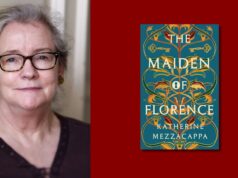
Last Voices of the Irish Revolution|Tom Hurley|Gill Books
Last Voices of the Irish Revolution—connecting ordinary people to extraordinary events
by John Kirkaldy
One of the biggest changes in studying history in recent decades is the increasing importance of oral evidence. The sight of a tape recorder in the past would too often produce a dismissive academic sniff. Now, thanks to massive technological changes and a big emphasis on the experiences of everyday people, oral history is often an important element in our understanding of the past.
Tom Hurley’s study, Last Voices of the Irish Revolution, looks at events in Ireland in the period 1919-23 through the eyes of ordinary men and women in the street. In 2003-4, he recorded the experiences of that time from 20 people across a very wide cross section (Catholic/Protestant/Unionist/Nationalist). The oldest was William Geary, aged 105, and the youngest, George Cooper was a mere 92. Only four of them were women. A hundred years after the interviews, he has now published their testimonies.

Background detail
As Shakespeare reminded us in a famous soliloquy, “old men forget” and perhaps very old men and women forget even more? What is impressive in Hurley’s survey is that he has checked, wherever possible, against official records and contemporary evidence. Every snippet of speech is backed up by background detail and explanation.
Despite a gap of 80 years or more, he found that generally, they were very accurate but adds, “I have corrected the occasional mistake but for the most part I have left their versions alone.” He may, however, be a little optimistic when he states: “I am satisfied that all the details contained within the book are true.” It will come as no surprise that the expressed views sometimes disagree!
Reminiscences come basically in three forms—direct involvement, witness to important incidents, and details of everyday life in one of the most important eras in Irish history
Although the period 1919-23 is the central pivot of the book, there are a lot of events discussed before and after that time. Reminiscences come basically in three forms—direct involvement, witness to important incidents, and details of everyday life in one of the most important eras in Irish history.
Personal recollections
Events often do come alive when recalled by those who were there. Seán Clancy remembered several IRA ambushes in 1921: “…we might have only two or three weapons, revolvers, we had no rifles but each of us would likely have hand grenades.” Margaret Cahill of the Cumann Bann “used to take the dispatches from Ballinasare to Lispole, about seven or eight miles I’d walk.”
Children were sometimes present at crucial moments. John Parkinson of the Belfast Boys Brigade was part of a guard of honour, when King George V opened the Northern Ireland Parliament in June 1921. Earlier, with his father as a small child, he had watched the Titanic “sailing away up Belfast Lough to Southampton” in April 1912.
The major figures, such as Michael Collins, Kevin O’Higgins, James Craig and Terence MacSwiney, are sometimes seen at a distance—occasionally too, close up: Kathleen Charles and her mother present flowers to Éamon de Valera, when he visits Kanturk for an election meeting in June 1922.
Times were often very different. Geary recalled walking “to school from the age of about five, every day winter or summer. In the summer, we took off our shoes – glad to do it.” The teaching of Irish was marginalised in the school and “we had no writing tablets, only a slate and pencil.” Clancy was one of nine raised on a farm: “there was no machinery on the land and it was done by hand.”
Events seen from grassroots
The book benefits from some exemplary editing. A detailed chronology is supplied, stretching from February 1899 to April 1949. Each of the interviewees gets a detailed biography and a photo, and there are 52 pages of endnotes, giving details of each interview. I relished the occasional marginal detail, such as Patsy Holmes’ aunt giving Countess Markievicz a cup of tea, when she was facing trial in Mallow in July 1919.
The events surrounding this period are some of the most controversial and debated in Irish history – the campaign for Home Rule, growing militant unionism and nationalism, the outbreak of World War One, the Easter Rising, the 1918 election, the first Dáil, the War of Independence and the subsequent Civil War. What the book successfully does is refocus these events, as seen from the grassroots.
The events surrounding this period are some of the most controversial and debated in Irish history
It is also another reminder of the passions involved. The Civil War saw 77 executions and a series of reprisals. Geary spent most of his life in exile in the United States, as a result of controversy over his role in the Civil War. He was only formally exonerated after a long legal campaign in 1999.
The book is presented in chronological order but I found myself dipping into it at random, often following one of the characters through the period and then retracing my steps. What it achieves is what good oral history can successfully do – connecting ordinary people to extraordinary events.

John Kirkaldy has a PhD in Irish History, worked for many years with the Open University and has been reviewing for Books Ireland since 1980. He has contributed to three Irish history anthologies, a school textbook, and has been involved in a number of Open University History documentary series. Aged 70, five years ago, he went round the world on a much delayed gap year described in his book, I’ve Got a Metal Knee: a 70-Year Old’s Gap Year.












